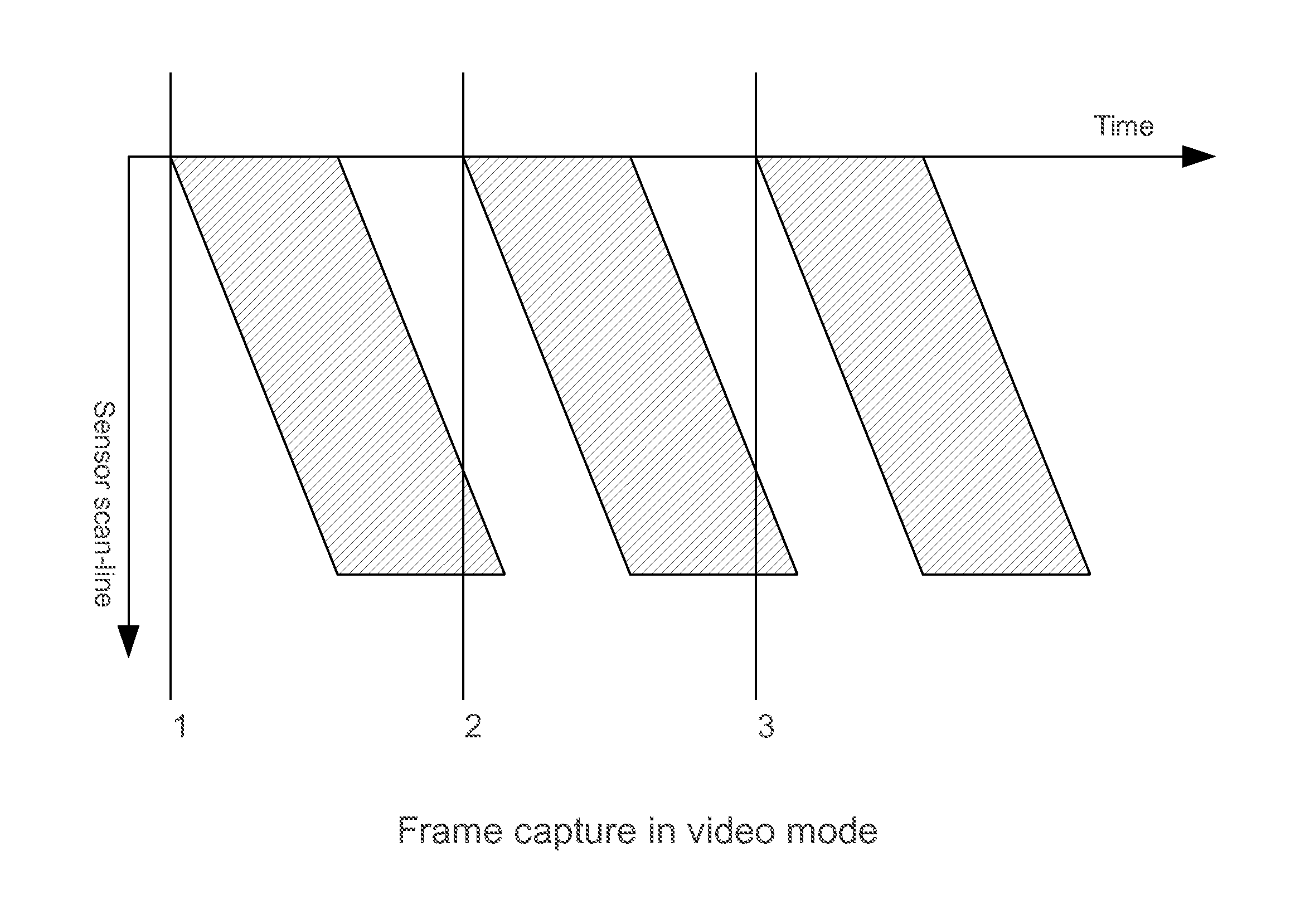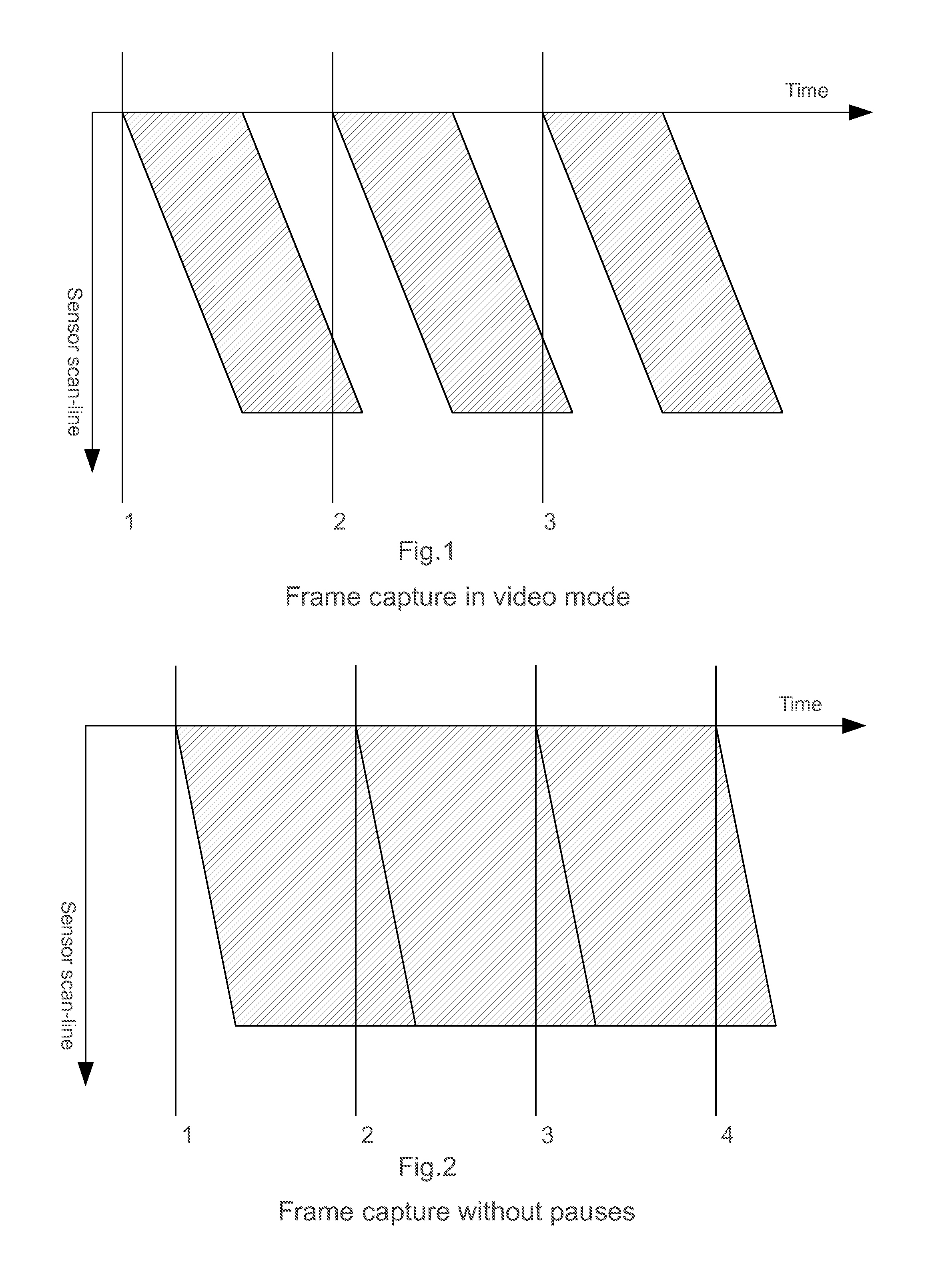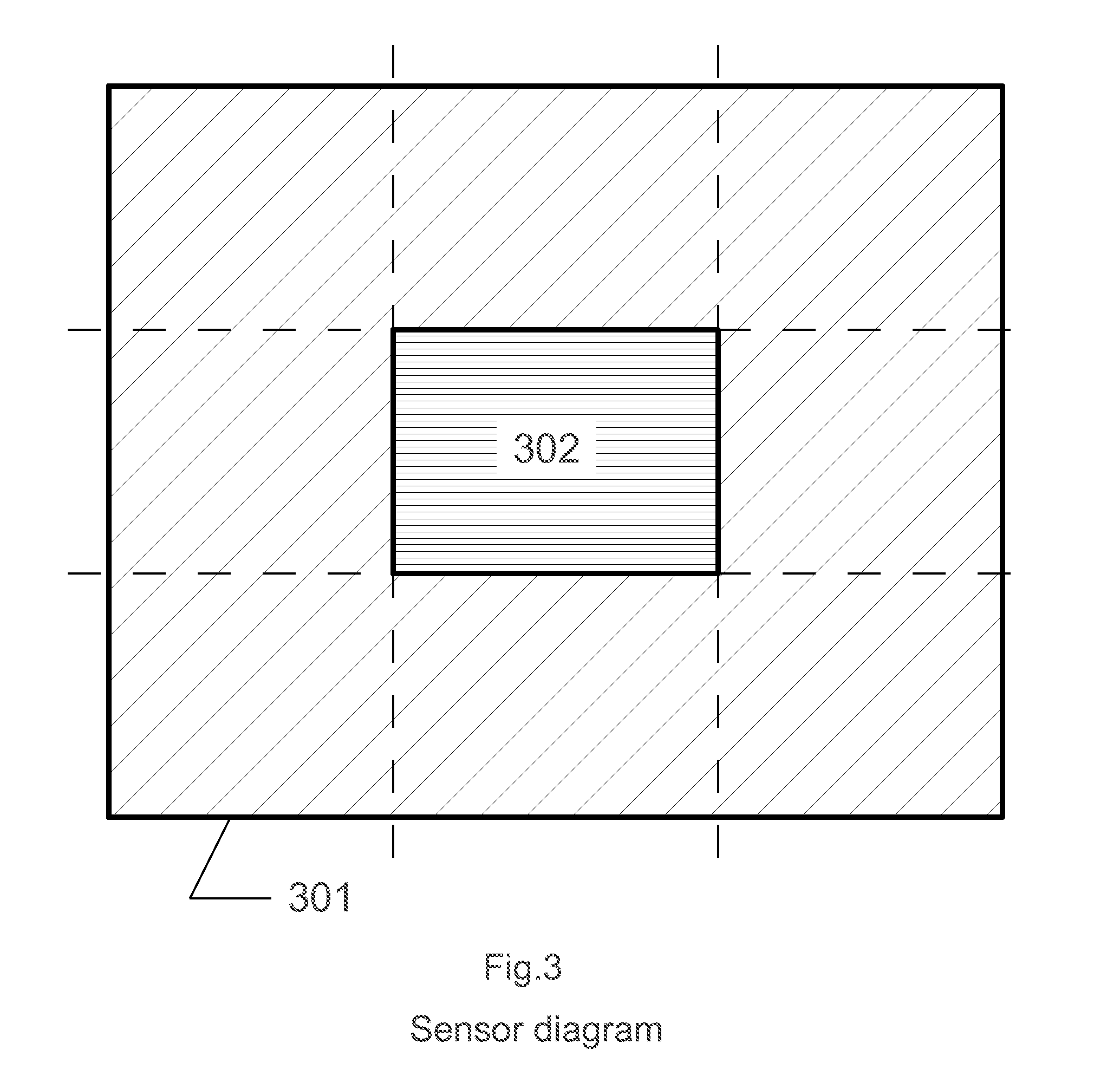Method for producing super-resolution images and nonlinear digital filter for implementing same
a nonlinear digital filter and super-resolution technology, applied in the direction of instruments, geometric image transformation, television systems, etc., can solve the problems of inability to use optical systems with variable focal lengths, use of traditional stabilizing systems, and inability to meet the mobility requirements of such devices, and achieve high quality and resolution.
- Summary
- Abstract
- Description
- Claims
- Application Information
AI Technical Summary
Benefits of technology
Problems solved by technology
Method used
Image
Examples
Embodiment Construction
[0056]Frame capturing by means of the introduced method is performed as follows: as the maximum speed of acquired data readout from the sensor in modern mobile devices is limited by the maximum possible speed of the data transfer interface, and during the shooting of visually magnified images there is no need to scan the entire area of the sensor, it is possible to proportionally increase the frame-rate of the frames capture. Several frames are being exposed with fixed frame rate and exposure and frame rate are selected in such a way as to allow to exclude pauses between exposures. In case of bad lighting of an object, it is possible to either increase exposure of each frame, or (more preferably) increase the number of exposed frames.
[0057]So, during triple visual-magnification of the shooting object, only 1 / 9 of the sensor surface is scanned, the maximum frame rate may be enhanced 9 times respectively. This means, for example, the shooting of 9 frames takes the same time as the sho...
PUM
 Login to View More
Login to View More Abstract
Description
Claims
Application Information
 Login to View More
Login to View More - R&D
- Intellectual Property
- Life Sciences
- Materials
- Tech Scout
- Unparalleled Data Quality
- Higher Quality Content
- 60% Fewer Hallucinations
Browse by: Latest US Patents, China's latest patents, Technical Efficacy Thesaurus, Application Domain, Technology Topic, Popular Technical Reports.
© 2025 PatSnap. All rights reserved.Legal|Privacy policy|Modern Slavery Act Transparency Statement|Sitemap|About US| Contact US: help@patsnap.com



